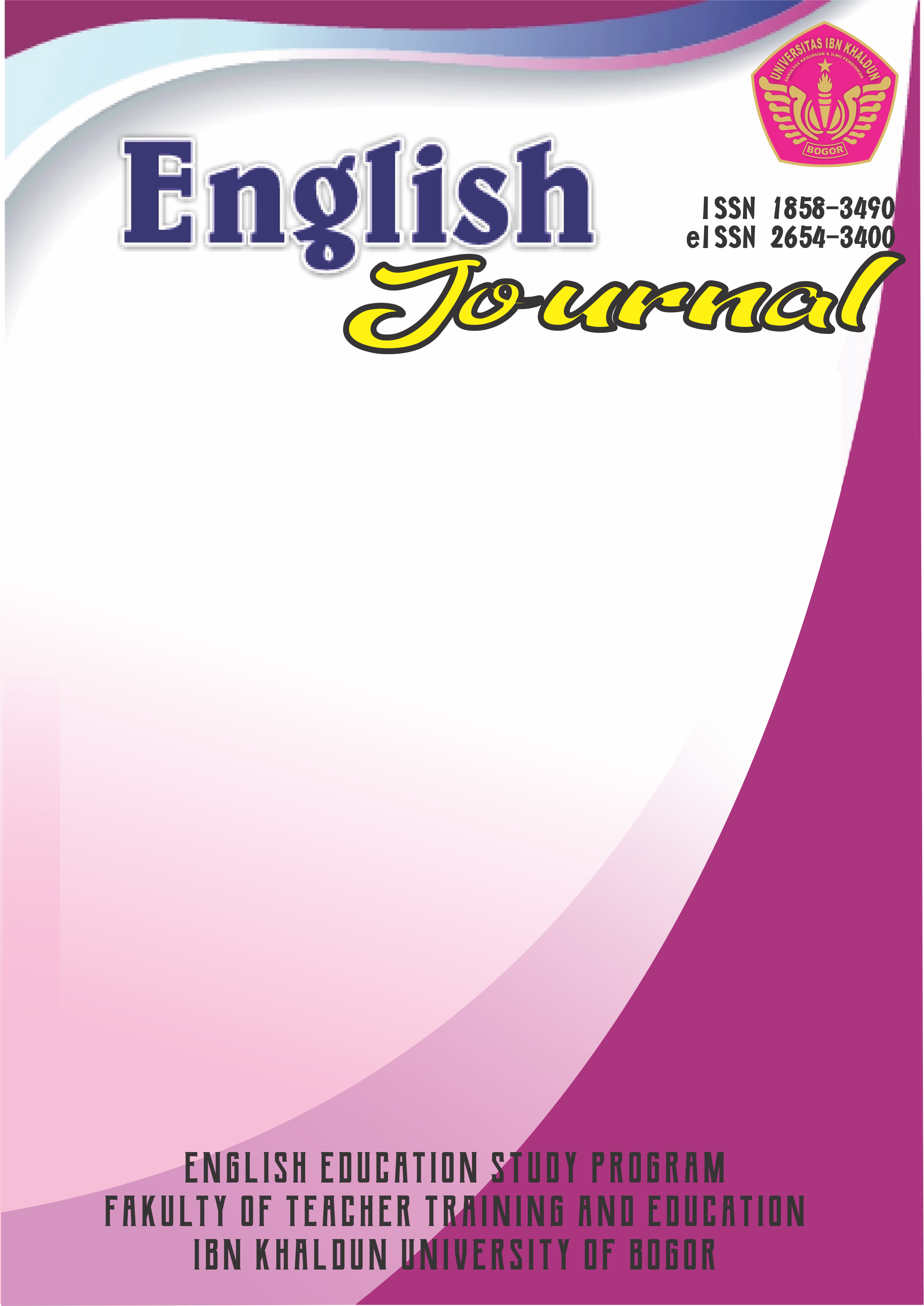INTEGRATING CHARACTER BUILDING INTO ENGLISH TEACHING AND LEARNING PRACTICE IN INDONESIAN CLASSROOM
DOI:
https://doi.org/10.32832/english.v14i1.3786Abstract
Indonesian government has just made great changes in its national curriculum. One of its changes is the emphasis on character building. For Indonesian teachers, this new policy is quite a challenge. In previous curriculum, character building was treated as a hidden curriculum and not explicitly part of scoring system. The new curriculum explicitly states the characters which must be developed by teachers. Finding the basis to perform teaching process to achieve the improvement of language knowledge, skills and characters is indeed needed. An action research was then conducted. In one cycle, the research proved that the implementation of actions integrating character building into teaching and learning process could significantly improve not only students' attitude but also their knowledge and skill on expressing things happening in English. It means that teachers can work on the three important aspects; namely attitude, knowledge and skill together. In other words, teachers could kill two birds with one stone.References
Anderson, L. W. and Krathwohl, D. R., et al (Eds.) (2001). A Taxonomy for Learning, Teaching, and Assessing: A Revision of Bloom's Taxonomy of Educational Objectives. Allyn & Bacon. Boston, MA (Pearson Education Group)
Barrow, Robin and Ronald Woods. (2006). An Introduction to Philosophy of Education. New York, NY: Routledge.Brown, H. Douglas. (2000) Principles of language learning and teaching. New York: Longman.
Bloom, B.S. and Krathwohl, D. R. (1956) Taxonomy of Educational Objectives: The Classification of Educational Goals, by a committee of college and university examiners. Handbook I: Cognitive Domain. NY, NY: Longmans, GreenCelce-Murcia, Marianne , Zoltan Ddrnyei, & Sarah Thurrell. (1995). Communicative Competence: A Pedagogically Motivated Model with Content Specifications. Issues in Applied Linguistics. ISSN 1050-4273C Regents of the University of California VoL 6 No. 2 1995 5-35 http://www.zoltandornyei.co.uk/uploads/1995-celce-murcia-dornyei-thurrell-ial.pdfCohen, Louis. Lawrence Manion. Keith Morrison. 2009. Research Methods in education. 6th ed. London: Routledge.
Departemen Pendidikan dan Kebudayaan. 1999. Penelitian Tindakan Kelas.Jakarta: Departemen Pendidikan dan Kebudayaan.
Eny Purwandani dan Purwati Jurnal Penelitian Humaniora, Volume 9 No. 1Februari 2008, hal 13 - 31, Universitas Muhammadiyah Surakarta.http://lppm.ums.ac.id
Gregoire , Carolyn. (2015). Why personality is a better predictor of success than intelligence. The Huffington Post. http://www.huffingtonpost.com/news/icon-next/
Harrow, A. (1972) A Taxonomy of Psychomotor Domain: A Guide for Developing Behavioral Objectives. New York: David McKay.
Kementerian Pendikan Nasional Republik Indonesia: RENCANA INDUK PENGEMBANGAN PENDIDIKAN KARAKTER BANGSA. (2013)
Kementerian Pendidikan dan Kebudayaan Direktorat Jenderal Pendidikan Dasar Direktorat Pembinaan Sekolah Memengah Pertama. (2014). Panduan Penguatan Pendampingan Kurikulum 2013.
Kementerian Pendidikan dan Kebudayaan. Permendikbud No. 65 Tahun 2013 tentang Standar Proses.
Kementerian Pendidikan dan Kebudayaan. Permendikbud No. 66 Tahun 2013 tentang Standar Penilaian.
Kementerian Pendidikan dan Kebudayaan. Permendikbud No. 68 Tahun 2013 tentang KD dan Struktur Kurikulum 2013 tingkat SMP-MTs.
Krathwohl, D.R., Bloom, B.S., Masia, B.B. (1973). Taxonomy of Educational Objectives, the Classification of Educational Goals. Handbook II: Affective Domain. New York: David McKay Co., Inc.Larsen-Freeman, D. (1986). Techniques and Principles in Language Teaching. Oxford: Oxford University Press.
Legge, Karen & Philippe Harari. (2000). Psychology and Education. Oxford: Heinemann Educational Publisher. https://books.google.co.id/books?id=da_e2GHVI5cC&pg=PT34&dq=bruner+discovery+learning&hl=en&sa=X&ei=ZpblVPjpLcG1uQSS54GIAg&redir_esc=y#v=onepage&q=bruner%20discovery%20learning&f=false
Littlewood, William. (1981). Communicative language Teaching. Cambridge, UK: Cambridge Teaching Library Mettetal, Gwynn. "Classroom Action Research Overview”. Indiana University SouthBend.
Miller , Mary. Teaching and Learning in Affective Domain. The University of Georgia. http://epltt.coe.uga.edu/index.php?title=Teaching_and_Learning_in_Affective_Domain
Noffke, Susan E. Robert B. Stevenson.Ed. (1995). Educational Action Research. New York: Teachers College Press.
Rusmulyadi, S.Ag., M.Si.Medya Apriliansyah, S.E., M.Si.Denada Faraswacyen L. Gaol, M.Si. (2010) Strategi komunikasi remaja pesantren dalam pengembangan character buildinghttp://astri.budiluhur.ac.id/wp-content/uploads/2010/03/abstrak-3-vol-6.pdf
Wahyuni, Lista . http://jurnal-online.um.ac.id/data/artikel/artikelD4E74738088C7FE280D0574AF78B43A7.pdf.
Wilson, Leslie Owen, Ed. D. Three Domains of Learning – Cognitive, Affective, Psychomotor. Retrieved from http://thesecondprinciple.com/instructional-design/threedomainsoflearning/ http://www.unesco.org/new/en/education/networks/global-networks/aspnet/about-us/strategy/the-four-pillars-of-learning/

















1.png)




